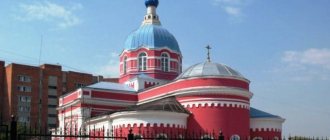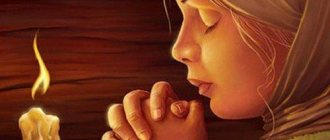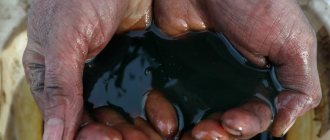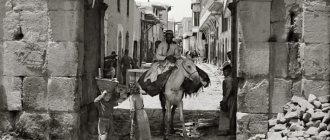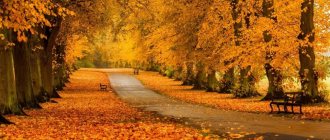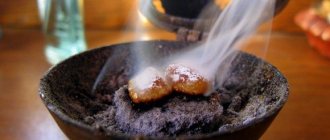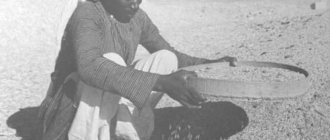The Islamic factor has a tangible impact on the internal situation and foreign policy of many states in Muslim regions. Recently, it has also acquired unprecedented significance in the international political arena. News agencies around the world report hourly on new events in one country or another in which Islamic religious and political groups took part.
The hearth and territorial base of these groups is Syria. The religion of 90% of the citizens of this country is Islam, which encourages people to associate terrorism and the Islamic faith. In the media space, one can increasingly see the clichés “Syrian terrorists”, “Syrian suicide bombers” and so on.
Such associations help to escalate the conflict and stimulate a feeling of “Islamic danger.” Suffice it to recall the bloody history of Charlie Hebdo, which was provoked by their religious caricatures, and the latest attacks on official, peaceful Islam, saying that the roots of the problem are in the Islamic faith. Traditional Islam, and specifically the moderate Islamic faith of Syria, has long been successfully integrated into the modern world, coexists peacefully with other religions and makes every effort to emphasize its rejection of extremism.
A brief excursion into the pre-Islamic period of Syrian history
Syria is located on the line of contact of several continents at once: its continental part is in contact with Western Asia, the south of the country borders on the Arabian Peninsula, and the north on Asia Minor. Since ancient times, Syria has been the intersection of major trade routes and the point of synthesis of several religious systems: Palestine, Phenicia, Mesopotamia and Egypt.
The main feature of the organization of the pantheon of gods on the territory of ancient Syria was its decentralization. Various Syrian cities had their own cults, however, there was also an obligatory, “official” cult: all, without exception, the kingdoms worshiped the gods Baal and Baalat.
Folk cults are mainly associated with gods favorable to agriculture: gods of rain, harvest, harvest, winemaking, etc. One can also note the exceptional cruelty of the ancient Syrian cults: the deities were considered exclusively evil and harmful, due to which they had to be constantly appeased with the help of victims, most often human.
Thus, the religion of Syria in the ancient period can be characterized as a system that combines private communal agricultural cults with national cults.
Maalula
The name is translated from Aramaic as “entrance”.
This long-suffering place is associated with the life of the first Christian saint Thekla of Iconium.
The convent of St. Thekla (Deir Mar-Takla), located here, was built near the place where the saint’s cave was preserved, in which she carried out the feat, died and was buried.
In September and December 2013, Maaloula was captured by militants.
During the fighting, the city and the monastery were badly damaged.
During the December seizure, a pogrom was carried out in the monastery of St. Thekla, the nuns of the monastery were kidnapped, and only in 2021 the nuns of the monastery were able to return home and services began.
History of the spread of Islam in Syria
Islam began to spread in Syria at the beginning of the 7th century. Its emergence is associated with the development of monotheistic religions - Judaism and Christianity, as well as with the evolution of the religious consciousness of the population of Arabia. By the 7th century in Syria there were many people who believed in one God, but nevertheless did not consider themselves Jews and Christians. Islam fit perfectly into the situation, becoming the very factor that united disparate tribes and “laid” an ideological basis for political, social and economic changes.
By the end of Muhammad's life, an Islamic state was formed, in which all secular and all religious power was in the hands of Muhammad. After the death of the prophet, a situation arose when the ruler should become a person who would hold both the religious and secular components in his hands, in other words, the prophet’s deputy on earth, the “caliph.” A new form of state also emerges - the caliphate.
The first four caliphs, according to Arab historiography, were called righteous caliphs. All of them were companions of Muhammad. Only one of the caliphs - Abu Bakr - dies a natural death, the rest were killed. Before his death, Abu Bakr appointed Omar as his successor. It was under him that Syria, Iraq, Egypt and part of Libya came under the rule of the Caliphate. The Arabian Muslim state could already be safely called an empire.
The first task that faced the caliphate was the leveling of old tribal cults and the redirection of the energy of the Arab tribes from outdated primitive traditions to a good cause. Wars of conquest became such a thing. After some time, as a result of these wars, a small religious system grew into a world-scale civilization.
The entire territory of Syria gave up ground almost without a fight. The population was pleasantly surprised by the fact that Omar's troops did not harm the elderly and children, did not mutilate prisoners and did not rob local residents. Also, Caliph Omar gave an order not to touch Christians and to allow the population to choose their own religion. Syria had never known such a gentle approach, and therefore the local population willingly converted to Islam.
The reasons for such a willing change of faith can be outlined by remembering which religion was dominant in Syria immediately before the arrival of Omar. Christianity, which by that time had already become quite widespread in Syria, was still incomprehensible to the people who had only recently moved away from tribal cults, while Islam was an understandable, consistent monotheism, which also respected the sacred values and personalities of Christianity (the Koran also contains Isa and Mariam are Christian Jesus and Mary).
House of Angels: Deir Sherubim
Not far from Sayednai, on the highest point of the Qalamun ridge, one of the oldest monasteries in Syria, Deir Sherubim (cherubim in Aramaic), arose. Long before the monastery appears, you can see a huge statue of Christ the Savior, erected with the assistance of the Russian Orthodox Church, this sculpture is several centimeters larger than the famous statue of Christ in Rio de Janeiro.
The first monastic buildings appeared on Sherubim in the 3rd century under Emperor Constantine. Before this, the monks lived in caves, some of which have survived to this day.
The Catholicon of the Three Archangels (the main cathedral church) of the monastery was restored quite recently, in the eighties of the last century.
During the fighting in 2013 and 2014, the monastery was badly damaged; restoration has not yet begun, as there remains a danger of renewed hostilities.
Together with the military, only one monk named Nulya (Nikolai Xeri), an amazing person, a real hermit and prayer book, now lives in Sherubim.
Modern religious palette of Syria
In modern Syria, Muslims make up more than 90% of the population (75% are Sunnis, the rest are Alawites, Shiites and Druze).
10% of its population have a Christian faith in Syria (more than half of them are Syrian Orthodox, the rest are Catholics, Orthodox and adherents of the Armenian Apostolic Church).
The largest national minority in Syria is the Kurds. The religion of Kurds in Syria is extremely diverse: about 80% of all Kurds are Sunnis, and there are also many Shiites and Alawites. In addition, there are Kurds who profess Christianity and Judaism. The most extraordinary Kurdish religious movement can be called Yazidism.
Monastery of the Assumption of the Blessed Virgin Mary in Bleman
The Monastery of the Assumption of the Blessed Virgin Mary in Bleman is a young monastery in Syria, it is only 30 years old. It belongs to the Laodicean metropolitanate, the largest in Syria.
The road of the apostles from the South to the North passed precisely through this area; the holy apostles Peter and Paul, Andrew the First-Called were the first to bring the news of Christ here.
The abbess of the Assumption Monastery is Schema-nun Macrina, a student of Elder Paisius the Svyatogorets.
The church never closes; the Psalter is constantly read there. The monastery lives according to one of the strictest Athos regulations.
The sisters carry out all kinds of obediences, but it is needlework that has become the calling card of the convent in Bleman.
Religious and political conflicts in the territory of modern Syria
In our time, the phenomenon of mass anti-Islamic psychosis is associated, to a large extent, with the propaganda of the Islamic State terrorists. Evidence of new “PR campaigns” by extremists of ISIS, Al-Qaeda and other transnational organizations based on the ideology of Islamic radicalism appears daily on the Internet. This ideology represents a decisive interpretation of Islamic doctrine in the context of the idealization of the early Islamic way of life and the political strategy based on it, aimed at the formation of a worldwide Caliphate, guided by Sharia law.
This ideologically based alternative is precisely the theoretical basis for the war against the West and against their own fellow citizens who profess a different kind of Islam, declared by the terrorists of the Islamic State. This terrorist group is in strong opposition to the Assad government, which adheres to more moderate religious norms and cooperates with Western countries.
Thus, although the true Islamic faith of Syria is now stained with blood, this blood lies on the conscience of the terrorists, sponsors and accomplices of terrorism. The reasons for these bloody conflicts lie in the area of politics, economics (on the territory of Muslim states there are oil and gas reserves that are of strategic importance for the economies of Western countries), but not in the area of the Islamic faith. Islamic faith is an ideological lever of extremists, a means of manipulation for their own geopolitical and geo-economic purposes.
Deir Mar Ilyas near Homs
The Monastery of Prophet Elijah near Homs was founded only 230 years ago and is considered young for Syria. From the high plateau on which the monastery is located, there is a magnificent view of the Mediterranean Sea and the island of Arvad.
Today there are six monks working in the monastery. During the war, the monastery was not attacked; a humanitarian aid collection center was set up in it; monks and sisters of mercy received refugees from the long-suffering Mharde, where more than 20,000 Orthodox Christians suffered during the conflict.
Every Sunday, the rector, Hieromonk Paisiy holds spiritual meetings with his flock in the open air - often to the sound of another shootout somewhere nearby.
Shrines[edit]
Most of the shrines in Syria are located in the churches of the Antiochian Orthodox Church.
DAMASCUS. Umayyad Mosque. Relics and shrines:
- prophet John the Baptist (chapter).
- Gate Bab Sharqi, through which the Apostle Paul entered the city
- the window through which the Apostle Paul was lowered down on a rope
SAYDNAYA (27 km northeast of Damascus). Saidnaya Monastery:
- the original icon of the Mother of God “Shagura” (“Saidnaya”) (in the chapel; only the casket in which the image is kept is available for veneration).
MAALULAH (55 km north of Damascus). Monastery of St. Thekla. Relics:
- equal to mts. Thekla (relics in the cave chapel).
D. QALAT EL-HOSN (36 km southwest of Damascus). Druze Nabi Habil Mosque:
- Abel's tomb (open on Fridays).
HOMS. Umm Zunnar Temple:
- Belt of the Mother of God.
Content
- 1 Largest cities
- 2 Antiochian Orthodox Church
- 3 History 3.1 Initial period. I-V centuries
- 3.2 Period of Christological divisions. V-VII centuries
- 3.3 Under Arab rule. VII-XVI centuries
- 3.4 Seljuks and Crusaders. XI-XVI centuries
- 3.5 Under the rule of the Ottoman Empire. XVI-XIX centuries
- 3.6 Recent history

